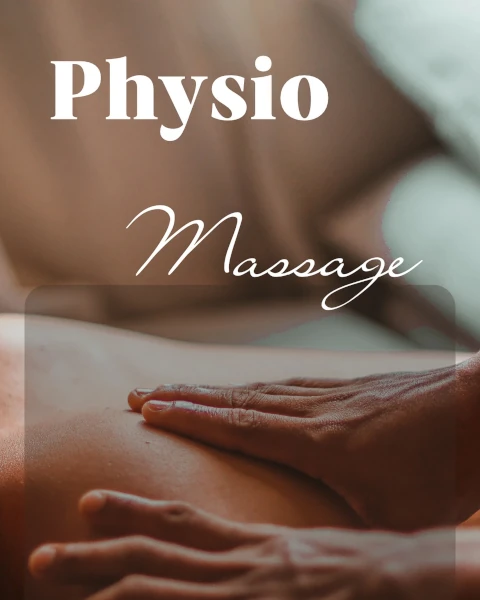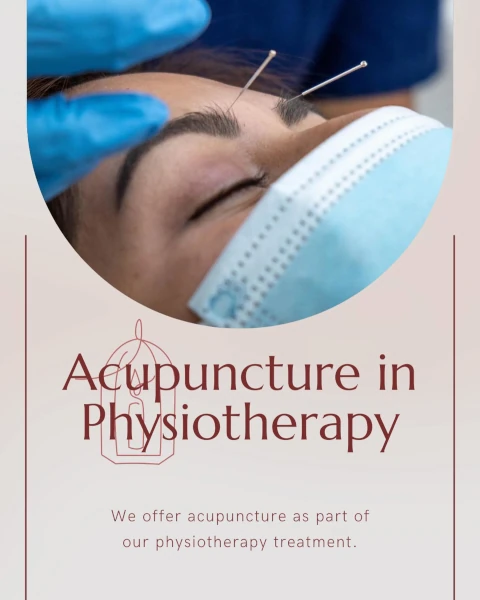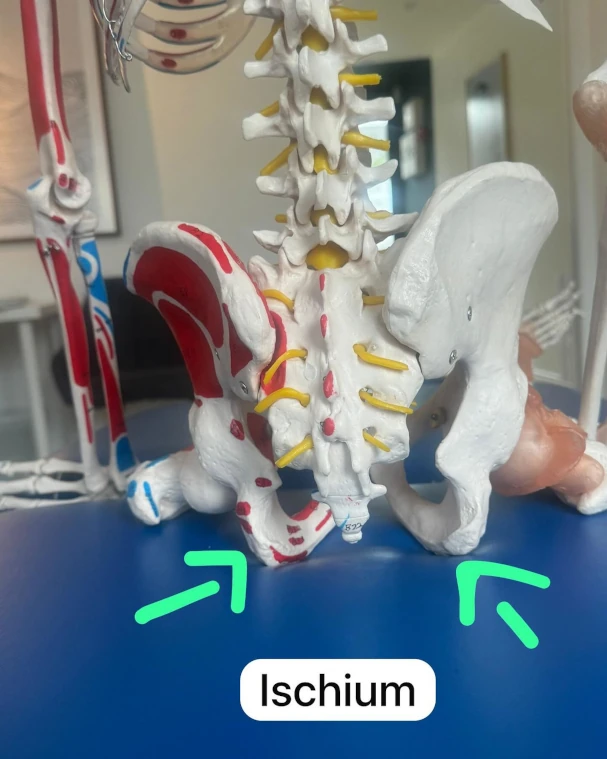Desk work and back pain go hand in hand, but it doesn’t have to be that way. If you want to improve your sitting posture, fix your back pain, and learn how to have a healthier spine when working at your desk develop good sitting habits, and you’ll save yourself a lot of pain down the road.
We’ve all heard the basic ergonomic ideas before, so I’m not going to talk about having your feet hit the floor and placing your keyboard at a comfortable height.
Instead, I want to zoom in on one very important detail: what’s actually hitting the seat.
When we slouch, we roll our pelvis backwards and end up sitting on our tailbone (leftmost posture in the image above). Our tailbones are delicate and not designed to bear weight like this.
Not only is this bad for the tailbone, but it can cause misalignment of the sacro-iliac joints (where the tailbone meets the pelvis), and from there, cause a chain reaction of discomfort all the way up the spine.
Then you realize “Whoops, I’m slouching again,” and sit up straight… Except you over-correct, and end up tightening your low back in a hyperlordotic curve (middle posture in the image above). Now that’s a whole other kind of back pain.
Instead, let’s find an in-between, the perfect balance where the pelvis is not tilted forwards or backwards but balanced on its points.
The pelvis has two big bumps on the bottom, called ischial tuberosities, ischium, or simply, the sits-bones. These bumps are designed to hold your weight safely, unlike your tailbone.
Practice sitting on your sits-bones, and your low back will thank you.
Want more tips?
Me and my colleague Tseten can work on your back problems, teaching you how to sort out your pain and learn to stay in health.
Fastest way to book with us: by phone or Whatsapp 07455250006 or by email info@romenendezphysio.com.

Free Physiotherapy Assessment Day – October 12
I am thrilled to introduce myself to you all! My name is Romyna Menendez, and I am a physiotherapist based in Hotwells, with over 15 years of experience in helping individuals achieve their physical wellness goals.I am currently working at “Happyback Clinic,” but I am...

Tecartherapy and manual therapy
Tecartherapy is an ideal tool to add into manual therapy sessions. The Tecar deliver warmth at depth within the tissues, encouraging healing and reducing pain, inflammation and swelling. Capable of penetrating through all tissue types, from soft tissue to bone..Most...

Beneficial effects of Tecartherapy
Tecartherapy has shown beneficial effects on both healthy and symptomatic tissues. The increase in temperature was predominant in all tissues, with greater warming at depth than at the surface. In the treatment of symptomatic tissues, Tecartherapy showed a reduction...

Achilles Tendinitis and treatments
There are two types of Achilles tendinitis Insertional Achilles Tendinopathy: Pain at the bottom of the Achilles tendon (where it connects into the heel bone); Caused by compressive forces of the tendon on the heel bone when the ankle is dorsiflexed (foot flexed...

How can acupuncture help?
After a full assessment with one of the specialist physiotherapists will see whether acupuncture may be suited to help you as part of your treatment. Single use fine needles are used at various ‘trigger’ points on the body depending on your symptoms and this will help...

Aging without injury
How older runners are killing the game Injuries are not fun, and neither is aging, but the two don’t always go hand in hand. Canadian physiotherapists argue that whether you’re fresh out of school or newly retired, age does not necessarily determine your running...

Does a Physiotherapist Do Massage?
Some Physiotherapists may also be trained in Sports Massage Therapy or Deep Tissue Massage, particularly if they regularly see athletic clients, or those that have ongoing musculoskeletal conditions.It has been found that such Physiotherapy and Massage Therapy...

Dr. Feldenkrais and Yoga
In 1958, a book “Yoga and Health” by Selvarajan Yesudian was published and Moshe Feldenkrais warmly welcomed the book and its author and appreciated Hatha Yoga. Among other things, he wrote the following:“Every bodily practice is good if performed correctly, as every...

We offer acupuncture as part of our physiotherapy treatment
Your Physiotherapist will, along with you, decide if acupuncture is an appropriate course of treatment for you. Many patients find acupuncture very effective in supporting and treating their condition. What is Acupuncture? Acupuncture involves stimulating sensory...

Initial Appointment
To book an initial appointment simply Whatsapp or call us 07 4552 50006. I will assist you with your booking. Happy to answer any questions or concerns you may have about booking with us. We will also make sure you get to see the best person to help you achieve your...







0 Comments